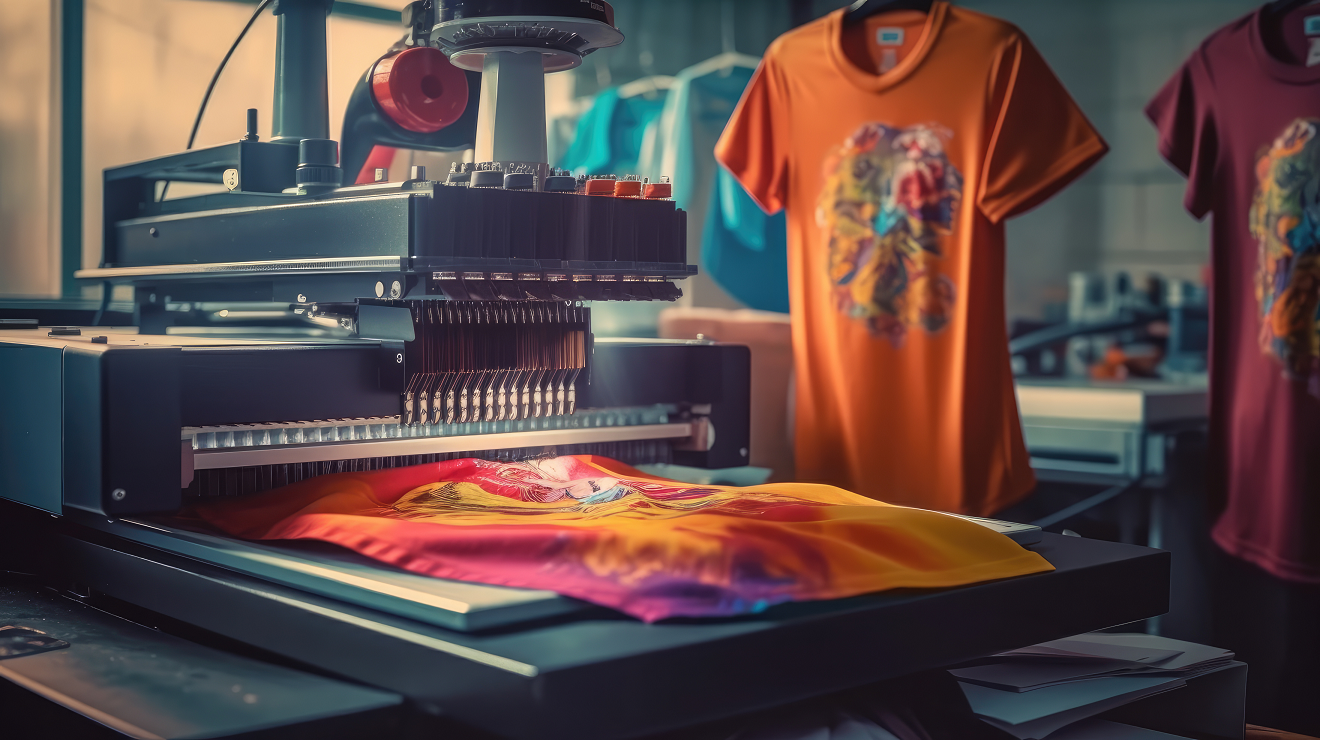COVID-19 Apparel & Footwear Retail Takeaways

COVID-19 Retail Takeaways: What Have We Learned So Far?
Running a business requires having a firm grasp on order management, customer compliance, third party integrations and more, at all times. It’s no surprise that companies often lose sight of improving core functions. COVID-19 has reminded businesses to refocus on these basics, like supply chain structure and continuous innovation. It has also forced companies to go beyond the fundamentals to focus on things like social justice and transparency. The decisions and changes you make now are crucial. You can sink or come out stronger than pre-pandemic times. The deciding factor is whether or not you are willing to act on the lessons that have shone through during these dark times.
Lesson 1: Diversify Your Supply Chain
If you have a supplier that provides you anywhere from 30-100% of your product or components for it, can you survive if suddenly they can no longer supply you? Your options at that point are bleak. You can delay shipment while searching for a new supplier, or find an interim supplier who is likely more expensive. Even worse, you may find yourself unable to find a supplier at all, forcing you to cancel customer orders and reevaluate the products you’ll sell going forward.
Single sourcing is a tempting trap to fall into. It requires less effort and is less money. COVID-19 is forcing supply chain managers to admit that these benefits aren’t enough to justify the avoidance of diversification any longer. “After the March 2011 earthquake and tsunami in Fukushima, Japan, many multinationals learned painful lessons about the hidden weaknesses in their supply chains — weaknesses that resulted in loss of revenue,”( Harvard Business Review ). These companies brushed this lesson off as a one-off, assuming that supply chain disrupting events were a once in a lifetime occurrence. COVID-19 is proving that assumption to be false.
It is also important to note that drafting deals with 2+ suppliers who provide the same item isn’t the only qualification of diversification. You also need to ensure that the fall of one supplier does not guarantee the collapse of the other. Geographic factors should be contemplated at length. For example, say you decide to diversify your cotton supply by finding an Indonesia-based supplier in addition to your existing Indonesia-based cotton supplier. If a huge storm takes out the Indonesian cotton crop, you are going to struggle.
Other reasons to geographically distance your suppliers are political implications and tariffs. COVID-19 exasperated already-tense relationships between the U.S. and China. After years of trade disagreements, by March of 2020 “the trade war forced U.S. buyers to reduce purchases from China, threatening shortages,” ( PIIE ). If all your suppliers are in China or another country with developing U.S. tensions, trade can prove to be detrimental to your company. It’s best to literally spread out your suppliers.
Lesson 2: Create to Sell
Producing ‘now’ and thinking about the ‘why’ later was commonplace. As a result, selling outdated products at a fraction of the price and product waste were the norm. “COVID-19 highlighted that more products do not necessarily yield more profits. Fashion companies must reduce complexity while increasing full-price sell-through and reduce inventory levels by taking a demand-focused approach for both new products and in-season replenishment...companies need to seize reshaped opportunities and double down on out-performing categories.”( McKinsey ). The potential to sell more only matters if you actually do. Instead of focusing on creating, creating, creating, take your time. Do research on what your consumers want to see on the shelves. Spend time crafting products that set you apart from your competitors, and that will actually sell.
Lesson 3: Be Conscious of Doing the Right Thing
While creating what you sell, avoiding waste is a best practice and attractive to eco-conscious consumers. According to a 2020 Coronavirus Response Survey, more than half of shoppers surveyed say sustainability /environmental friendliness has some to a great deal of influence on their apparel purchases. Going forward, 55% of consumers say sustainability and environmental friendliness will be somewhat/very important in the clothing they intend to purchase,” ( Sourcing Journal ).
We should anticipate these numbers to grow, fueled partly by the "free time" consumer now have. Time once used on commutes and social gatherings is now time that people are looking to fill. Many find time to now finally further their education or fulfill other passions. It's in part why there's a significant spike in calls of civil justice, law reforms, addressing climate change, and most relevant to your industry, sustainable and eco-friendly fashion. If you haven't already, start looking to purchase your raw materials from sustainable suppliers. Cut down on emissions created by your buildings and machines. Then, share your story with consumers stating the positive changes your company made. “Consumers (and increasingly investors) will reward companies that treat their...environment with respect, and the deeper relationships that emerge will bring benefits in agility and accountability,” ( McKinsey )
If you want to increase demand then don't stop there. Reevaluate the way you treat your employees, and if there’s a need to grow and to change then act on it and share your progress with consumers. If your employees already feel good about you and recognize your company as a great place to work, that’s worth sharing too.
Consumers want to do the ‘right thing.’ If you allow the purchasing of your products to be a means to reaching that goal, demand will create itself.
Lesson 4: Be Transparent with Your Customers
“Transparency is a fundamental pillar of safety and agility, and therefore crucial to implement at all tiers of the supply chain...authenticity in messaging is a necessary ingredient in customer retention,” ( Remake ). Consumers are hit with a sea of sameness when shopping for clothing and footwear. In a year that has torn the world apart, shoppers are turning to companies who differentiate themselves by being authentic. It is crucial to broadcast positive things you are doing for your employees and the environment. It is also important to be honest about shipping times and delays. The current state of the economy makes it difficult to reduce delays to 0. You need to show customers that even if there are delays, your company is worth the wait. If there is a shipment issue due to a COVID-19-related supply chain disruption; don’t cover it up with a lengthy apology filled with meaningless words. Provide an earnest apology with an actual explanation and a re-estimated ship date. Honesty builds trust and trust builds a loyal customer base.
Lesson 5: Make Digital Presence Your Main Priority
Although cash is tight right now for a lot of companies, and many struggle to prioritize allocation of those dollars, the answer is simple: spend it on your digital presence. Consumers are shopping online. They have lots of options to choose from, and can do so with a click of a button. Is your website too difficult to navigate? Click. Is your presence on social media lacking? Click. “Recent data shows that we have vaulted five years forward in consumer and business adoption of digital in a matter of months,” (McKinsey). If you haven’t improved your online presence since before the pandemic, it’s time to start - NOW. Your website must be easy to navigate, appealing to those you want to attract, and include clear calls to action.
How ABS Can Help
Diversifying Your Supply Chain
“The retail supply chain as it exists today across many verticals was built primarily for operational excellence and economic advantage, not agility,” ( Sourcing Journal ). ABS has key forecasting tools, allowing you to act swiftly and effectively to address your company’s specific demand. Predict when shortcomings are approaching because of suppliers.Quickly react and integrate new suppliers into your operations. Connect them instantly and automatically with finance, operations and shipping. Our tools make communication and interactions with vendors effortless, so there is nothing holding you back from working with multiple suppliers.
Create to Sell
ABS Dashboards give you the tools to centralize your operations and reduce employee workload, allowing them to focus on creating products that will actually sell. Our software simplifies Omni Channel sales, supports order sources such as Direct to Consumer, Wholesale and Consignment. Our forecasting functionality allows orders to be suggested or automatically placed based on time phased projections and/or historical order data. You have holistic, company-wide visibility to determine: Am I creating products that sell?
Be Conscious of Doing the Right Thing
Our Vendor Portal makes it easy to communicate with your suppliers. It’s a great place to quickly chat with vendors. Find out what their sustainability practices are for the materials you purchase from them, if their workforce is treated ethically, and if their labor practices are something you can be proud of.
What about your environmental footprint? Do you need to purchase new machinery and adjust processes internally to emit less waste into the universe? ABS Warehouse Management System makes organizing your warehouse simple, and managing inventory much more effective.
Be Transparent with Your Customers
ABS apparel and footwear ERP applications give your employees the visibility they need to see problems in advance to effectively and proactively communicate with your customers. Everyone in your organization is empowered to improve transparency when they have access to information your customers want.
Make Your Digital Presence Your Main Priority
Want to turn to the experts of Shopify or Magento to enhance your users’ experience on your website? ABS software easily integrates with e-commerce platforms so there is seamless communication between where a customer places the order, where that order is packaged and the location that order is shipped through.
Digital improvements shouldn’t stop at your online site. “Digital adoption soared amid the pandemic, with brands embracing livestreaming, virtual customer service, and social shopping. Fashion players must optimize the online experience and channel mix while persuasively integrating the human touch,” ( McKinsey ). Give your employees the time they need to add that human element to your virtual existence. ABS's fashion business software gives your employees the functionality they need. Great automation means spending less time entering data into spreadsheets and fixing manual mistakes, which ultimately means more time securing new customers and providing awesome service to existing customers.
We will get back to you as soon as possible.
4325 Alexander Drive, Suite 100
Alpharetta, GA 30022-3740
Apparel Business Systems | All Rights Reserved










